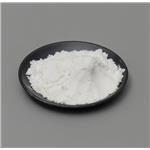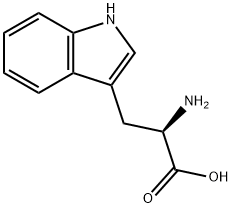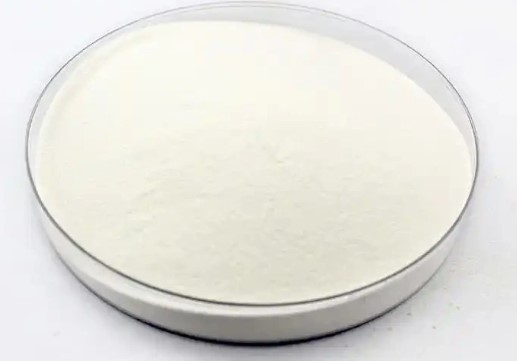D-tryptophan: an appropriate natural food preservative
Introduction
D-amino acids are enantiomers of L-amino acids, which were considered non-functional for a long time. However, further studies discovered that some D-amino acids, which are in mammalian tissues, contribute to critical physiological activities. D-tryptophan is a non-protein amino acid widely used in the food industry and agriculture. Although does not participate in protein synthesis, D-tryptophan shows special physiological functions.
Benefits
D-tryptophan is a non-protein amino acid widely used in food and agriculture. Although it does not participate in protein synthesis, D-tryptophan shows special physiological functions. In bacteria, D-amino acid synthesis is a strategy for adapting to changing environmental conditions. It has been reported that D-tryptophan suppressed bacteria growth, especially in high NaCl concentration and high temperature.
Another characteristic of D-tryptophan is its antibiofilm activity. Biofilms are communities formed by one or more bacterial species in an extracellular matrix. The formation of biofilms causes several problems. For instance, biofilms participate in the pathogenesis and transmission of foodborne pathogens. Moreover, in the food industry, biofilms cause microbiologically influenced corrosion (MIC), equipment failure, economic losses, and environmental damage. Studies have shown that D-tryptophan alone or combined with a mixture of other D-amino acids can have antibiofilm properties. Recently, the inhibitory effects of D-amino acids, especially D-tryptophan, on biofilm development have been reported in foodborne microorganisms such as Pseudomonas aeruginosa, Bacillus subtilis, and Staphylococcus aureus. Further analysis indicated that the inhibitory effects of D-tryptophan on biofilm development might be attributed to changes in initial adhesion between cells and the properties of the extracellular matrix. For example, exposure to 10 mmol/L D-tryptophan causes biofilm disassembly in Cronobacter sakazakii by reducing the initial adhesion between cells and changing the properties of the extracellular matrix. Therefore, D-tryptophan may be used as a novel preservative for controlling bacterial growth in foods, particularly in seafood, because of its high effectiveness in environments with high sodium chloride concentrations.
Moreover, D-tryptophan can elicit neutrophil chemotactic responses through the G-coupled protein receptor GPR109B and ameliorate allergic airway inflammation and hyperresponsiveness.
Uses
D-tryptophan is a safe, natural compound. In vitro studies have shown that it has good antimicrobial activity, along with other stresses, including osmotic and temperature, which makes it an appropriate natural food preservative.

Various studies have investigated the antimicrobial effect of D-tryptophan on foodborne pathogens in different food models. The antimicrobial effect of D-tryptophan on L. Monocytogenes was more significant in fresh heavy cream than milk, probably due to its lower water activity and higher fat content, which create conditions similar to osmotic stress.
Elafify et al. (2023) used D-tryptophan for the first time as an anti-spore additive in rice pudding, which could effectively prevent the growth of Bacillus cereus spores. The anti-sporogenesis mechanism of D-tryptophan is due to the autoinhibition phenomenon, which inhibits germination and prevents the growth of spores.
Chen et al. (2018) investigated the antimicrobial effect of 40 mM D-tryptophan on respiratory active cells of S. baltica and P. fluorescens in marine products at 1%–3% NaCl and 4°C. In this study, the number of cells decreased gradually, and the most significant reduction was observed at 3% NaCl concentration. The importance of respiratory active cells is due to their ability to aerobically spoil marine products because their number determines their spoilage potential. In fact, by preventing the growth of respiratory active cells, D-tryptophan delays the spoilage process in marine products (with a high spoilage rate).
Chen et al. (2022) also evaluated the effect of D-tryptophan at 3.5% NaCl and 4°C on the amount of total volatile basic nitrogen (TVB-N) in fish fillets. The initial amount of TVB-N in fish fillets was 8.0 mg/100 g. It reached 30 mg N/100 g in control (without D-tryptophan) on the eighth day, considered rotten fish. However, with 40 mM D-tryptophan, the amount of TVB-N reached below 30 mg N/100 g on day 10 of the storage. The amount of TVB-N is considered an indicator of spoilage in marine products, and its reduction by D-tryptophan may be due to the impact of D-tryptophan on reducing the population of spoilage microorganisms or their metabolic activity in the oxidative deamination of non-protein nitrogen compounds.
References
[1] Chong Wang. “D-tryptophan triggered epithelial-mesenchymal transition by activating TGF-β signaling pathway.” Food Science and Human Wellness 11 5 (2022): Pages 1215-1221.
[2] Minoo Moghimani. “D-tryptophan, an eco-friendly natural, safe, and healthy compound with antimicrobial activity against food-borne pathogens: A systematic review.” Food Science & Nutrition 12 5 (2024): 3068–3079.
);You may like
Related articles And Qustion
Lastest Price from D-Tryptophan manufacturers

US $0.00-0.00/kg2024-09-19
- CAS:
- 153-94-6
- Min. Order:
- 0.10000000kg
- Purity:
- 99
- Supply Ability:
- 20tons

US $100.00-75.00/kg2024-09-19
- CAS:
- 153-94-6
- Min. Order:
- 1kg
- Purity:
- 99%
- Supply Ability:
- 5000Ton



